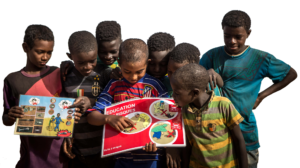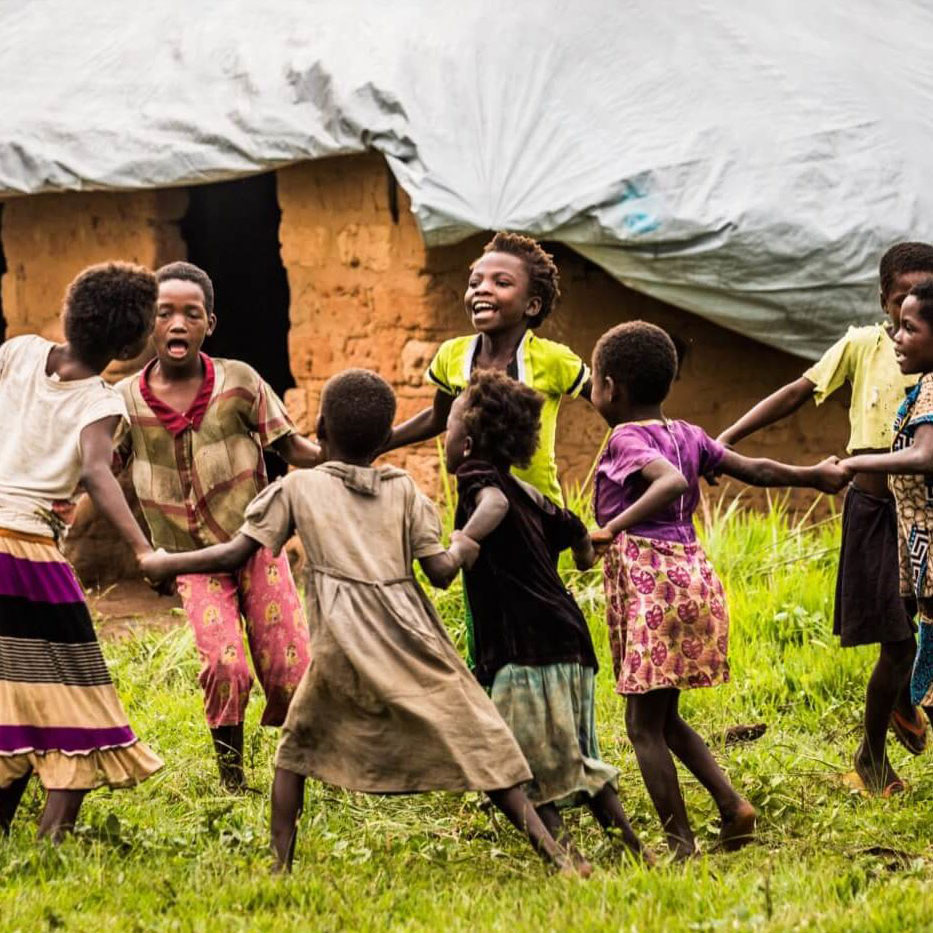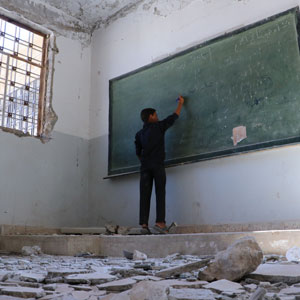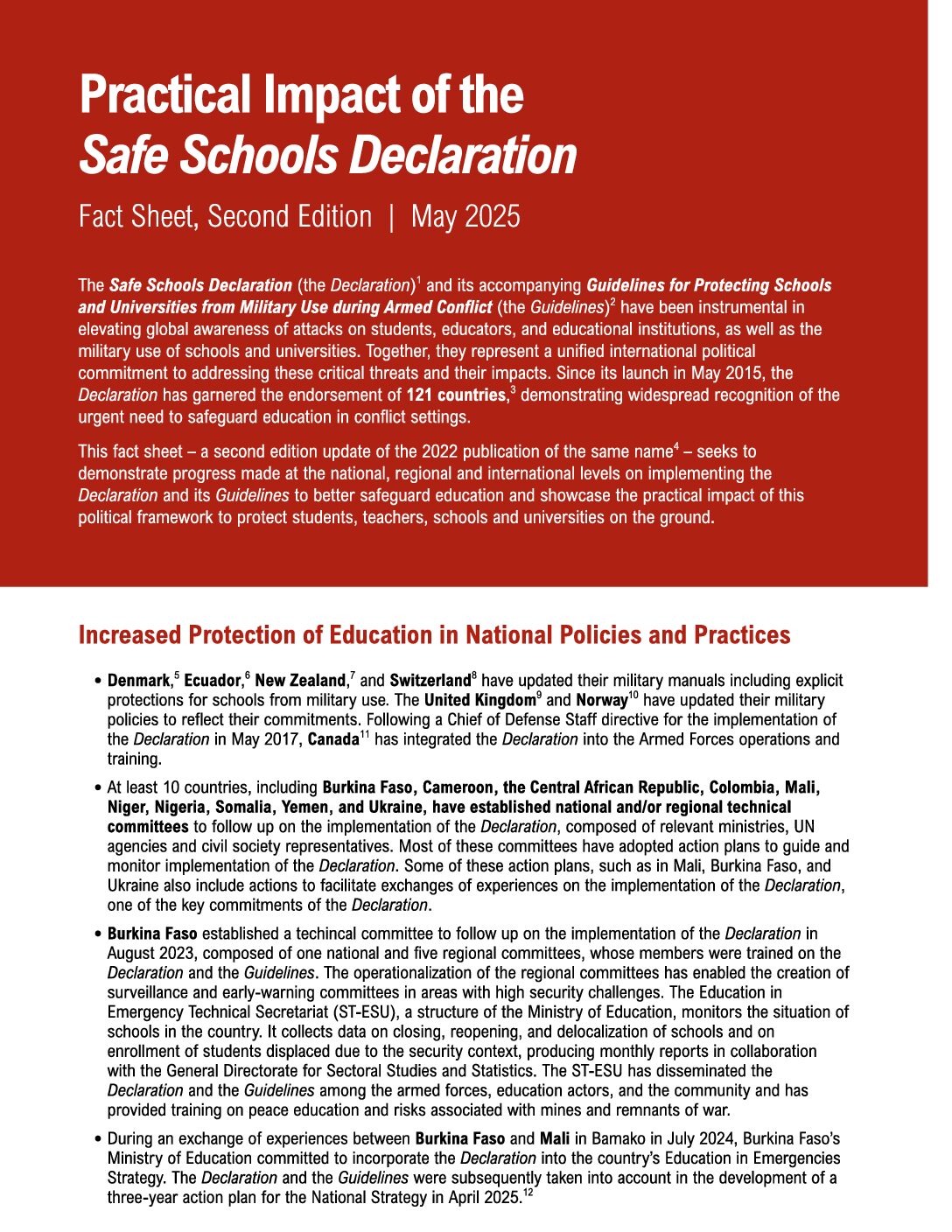GCPEA News
Educate Refugee Children Or Lose Them Forever
Al Jazeera / Human Rights Watch, September 20, 2016
As world leaders gather for President Obama’s Leaders’ Summit on Refugees on September 20, they should urgently address how to get the more than 3.5 million refugee children around the world who aren’t getting an education back in school.
All children have a legal right to an education. But too often, children forced to flee their homes also end up missing out on schooling–a double blow with dire consequences for their future. Parents trying to shield their children from the horrors of war should not have to watch them grow up without an education.
These children are often desperate to learn. Bara’a, a 10-year-old Syrian girl I met in an informal refugee camp in Lebanon, wasn’t able to enroll in school when she first arrived. So she propped a blackboard against a tree and started teaching children in the camp what she remembered from first grade. Parents have gone to extraordinary measures, even returning to Syria, to try to keep their children in school. But too often, the children I meet have been out of school for years—some have never set foot inside a classroom.
Failure to educate
One of the goals for Obama’s Leaders’ Summit is to reach another million refugee children with education. But that number is less than a third of the refugee children currently out of school. In setting such a low goal, world leaders guarantee that we will fail millions of children even if they meet their target.
Patting ourselves on the back for meeting low benchmarks is just not good enough. With the average length of a refugee crisis now pushing 20 years, children can spend their entire childhood displaced. There are currently 21.3 million refugees in the world—more than half of them children. When they are finally able to return to their homes, it is crucial for them to have the skills to rebuild their war-ravaged countries. Full enrollment for refugee children is feasible—but will require bold, decisive action.
Over the past two years, we have documented the barriers keeping nearly 750,000 Syrian refugee children out of school in Turkey, Lebanon, and Jordan. We found that there are concrete steps donor and host countries can take to make sure refugee children can go to school.
It is crucial for donors to step up with sustained, multi-year funding, and release that money on time to make planning for each school year possible. With 86 percent of refugees living in developing countries, refugee children’s education often depends on foreign aid. But donors can be slow to fulfill pledges and rarely meet the full need.
Failure to commit
In February, donors pledged US$12 billion at a London conference for Syria and neighboring host countries—the largest amount ever pledged in a single day in response to a humanitarian crisis. But more than seven months later it’s unclear how much of that money has materialized. An August report by the children’s charity Theirworld found that “donors have failed to meet even the most basic criteria for transparency.”
It is particularly important for donors to address the education needs of high risk populations like secondary-school age children and children with disabilities. In Lebanon, just 5 percent of Syrian refugees ages 15 to 18 enrolled in secondary school last year. Children with disabilities are often completely left behind.
But it’s not enough to fund places in schools—donor countries also need to help tackle the barriers keeping refugee children out of school in the first place.
Donor countries should pressure hosts to amend counterproductive policies that restrict access to education. Lebanon’s harsh residency regulations effectively bar many refugees from maintaining legal status—driving an estimated two-thirds of Syrians there underground and making it difficult for them work or enroll their children in school. In Turkey, refugees face months-long delays in obtaining the identification cards required to enroll children in school. Donors should exercise their leverage to ensure that these policies are reversed.
Chain reaction
Donors should also invest in jobs programs and partner with the private sector to ensure that refugees, the vast majority of whom live in poverty, can make a living wage and afford to send their children to school. Many families are unable to afford basic school-related costs like transportation or rely on income from child labor to survive. Host countries, concerned about job security for their citizens, often restrict refugees’ access to work. But such measures make it harder for refugee parents to send their children to school. Jobs programs can bolster the economy, preserve stability, and ensure that children can get an education.
Without immediate action and sustained support, there is a real danger that recent progress in enrolling refugee children will erode instead of expanding. This summit is an opportunity to focus the world’s attention on refugee children and to make real changes that ensure they can realize their right to an education. The costs of failure—child labor, early marriage, and a lost generation—are just too high.
Bassam Khawaja is the Lebanon researcher at Human Rights Watch and the author of a recent report, Growing Up Without an Education: Barriers to Education for Syrian Refugee Children in Lebanon.
The views expressed in this article are the author’s own and do not necessarily reflect Al Jazeera’s editorial policy.



